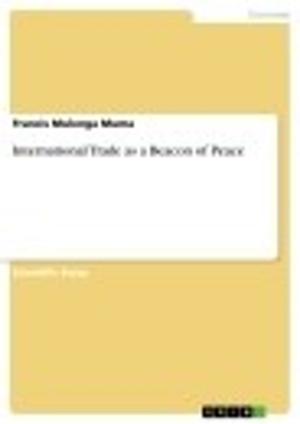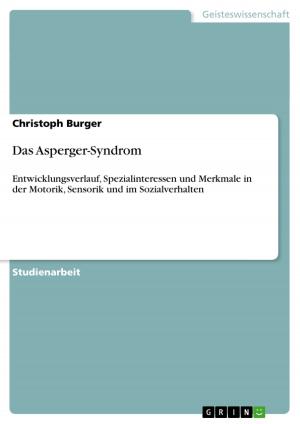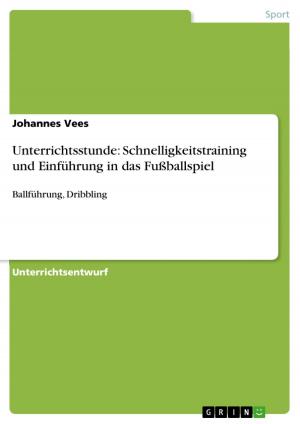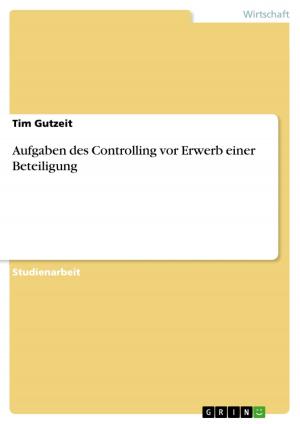Trafficking in Women
Issues, Strategies and Actors
Nonfiction, Social & Cultural Studies, Social Science, Gender Studies| Author: | Annika Peter | ISBN: | 9783656279754 |
| Publisher: | GRIN Verlag | Publication: | September 27, 2012 |
| Imprint: | GRIN Verlag | Language: | English |
| Author: | Annika Peter |
| ISBN: | 9783656279754 |
| Publisher: | GRIN Verlag |
| Publication: | September 27, 2012 |
| Imprint: | GRIN Verlag |
| Language: | English |
Seminar paper from the year 2010 in the subject Women Studies / Gender Studies, grade: 1,7, Ruhr-University of Bochum (Sozialwissenschaft), course: Geschlecht und Internationalisierung, language: English, abstract: This work will trace back the ongoing debates about trafficking in women for prostitution that started in the mid-1990´s and the different approaches and solutions that seek to end the trafficking in women. Though Trafficking in prostitution is not the only sector trafficked women work in, this work will, however, concentrate on this issue since trafficking in women in prostitution contemporary seems to be the most problematic one- in the field of politics as well as in the civil society or science. The question that will be followed in this work is, if the current approaches can provide effective tools to fight trafficking in women by looking at the contemporary discussions and actions that were taken concerning this issue. In the first chapter, a definition of trafficking in women will be given due to the many connotations the term carries along with it, providing different perspectives and also stereotypes. The next chapter will highlight the issue of trafficking in women for prostitution, paying special attention to the factors that determine the situation the women find themselves in, focusing on their status as migrants. Following the presumptions made in the preceding part of the work, the living conditions of the female migrants working in prostitution will be given a closer look at to find a link between their real situation and the strategies, that are followed by NGOs as well as governments. The next chapter will focus on the theoretical debates sourrounding this issue, that became prominent in the mid 1990s, and the solutions, that were established on the basis of the cooperation of different actors to end the trafficking in women, taking a closer look on the outcome of the different efforts that were taken concerning this issue. Moreover, the different positions and perspectives that are included in this debate will be analyzed according to their effectiveness for this sensitive issue. The last chapter will finally show the effects of the implementation of the tools, that sought to decrease the number of women being objected to trafficking organizations; it will also highlight new outcomes and trends, that succeed the actions that were taken on grounds of the recommendations made by the different actors in the field of trafficking in women for prostitution.
Seminar paper from the year 2010 in the subject Women Studies / Gender Studies, grade: 1,7, Ruhr-University of Bochum (Sozialwissenschaft), course: Geschlecht und Internationalisierung, language: English, abstract: This work will trace back the ongoing debates about trafficking in women for prostitution that started in the mid-1990´s and the different approaches and solutions that seek to end the trafficking in women. Though Trafficking in prostitution is not the only sector trafficked women work in, this work will, however, concentrate on this issue since trafficking in women in prostitution contemporary seems to be the most problematic one- in the field of politics as well as in the civil society or science. The question that will be followed in this work is, if the current approaches can provide effective tools to fight trafficking in women by looking at the contemporary discussions and actions that were taken concerning this issue. In the first chapter, a definition of trafficking in women will be given due to the many connotations the term carries along with it, providing different perspectives and also stereotypes. The next chapter will highlight the issue of trafficking in women for prostitution, paying special attention to the factors that determine the situation the women find themselves in, focusing on their status as migrants. Following the presumptions made in the preceding part of the work, the living conditions of the female migrants working in prostitution will be given a closer look at to find a link between their real situation and the strategies, that are followed by NGOs as well as governments. The next chapter will focus on the theoretical debates sourrounding this issue, that became prominent in the mid 1990s, and the solutions, that were established on the basis of the cooperation of different actors to end the trafficking in women, taking a closer look on the outcome of the different efforts that were taken concerning this issue. Moreover, the different positions and perspectives that are included in this debate will be analyzed according to their effectiveness for this sensitive issue. The last chapter will finally show the effects of the implementation of the tools, that sought to decrease the number of women being objected to trafficking organizations; it will also highlight new outcomes and trends, that succeed the actions that were taken on grounds of the recommendations made by the different actors in the field of trafficking in women for prostitution.















